Thursday, September 30, 2021 – Stair Exercise
- Mary Reed

- Sep 30, 2021
- 14 min read
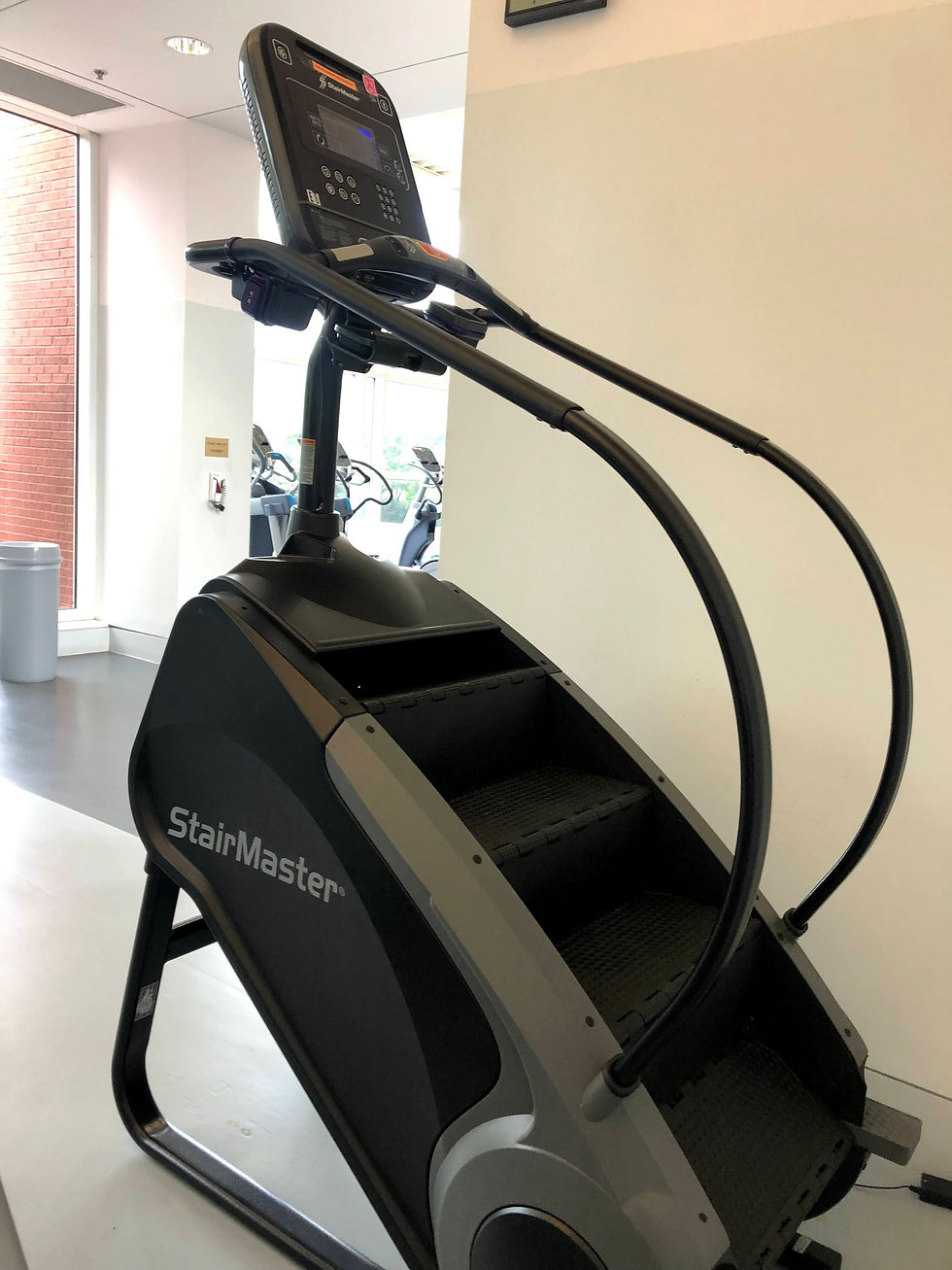
The photo is of the StairMaster at my athletic club. Although I have not used this machine lately because of my knee issue, I have used it in the past. It does make me out of breath in a short period of time, so I cannot stay on it long. But I have seen people on it for extended periods of time. There is one woman who exercises TWICE a day at the athletic club and always uses the StairMaster. She brings her own fan and sturdy cardboard box to set it on so the fan will be high enough to where she can feel its cooling breezes while she is on the StairMaster. She is what I would describe as a gym rat. I live in a townhouse with stairs to a second floor. Those stairs are my own personal workout equipment. I have used them for exercise, especially during the height of the pandemic. I have a friend who lives in a three-story townhouse. She can get in a very good workout in her own home, if she chooses to do so, just by using her stairs. At any rate, using regular stairs or a stair stepper machine can be good exercise. Let’s learn more about stair stepper machines.
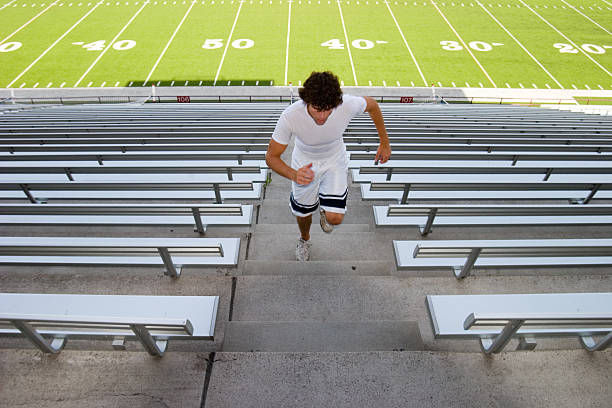
According to Ruben Castaneda’s July 29, 2019 article “The Benefits of Stair Climbing Exercise” in U.S. News & World Reports, to get the most out of stair climbing, stand up straight, wear proper shoes and control your breathing. Dr. Kenneth Hunt vividly remembers how, as a high school football player in the 1990s, he and his teammates often ran up and down stadium stairs during practice. Their coach made the players run the steps as part of the team's conditioning regimen to strengthen their legs, improve their cardiovascular systems and boost their balance.
As a player, he experienced how the workouts made him stronger. Today, as the medical director of the UCHealth Foot and Ankle Center – Stapleton in Denver, he advises patients that climbing stairs — whether you're working your way up and down actual steps or exercising on a stair climbing machine — can be an efficient and safe way to exercise multiple muscle groups.
"Climbing stairs can be an effective exercise for strengthening muscles, improving your balance and boosting your cardiovascular health," Hunt said. This form of exercise is typically safe for most healthy people, though it can pose a health risk for some, he said. For example, if you have trouble with your balance and are prone to falling or have weakness, stiffness or pain in your feet, ankles, knees or hips, any kind of stair climbing may not be right for you. The same holds true if you have an inflammatory condition like arthritis, bursitis or degenerative joint disease. If you have these issues, you should check with a physical therapist or your primary care physician before initiating a stair climbing regimen, Hunt advises.

By strengthening leg muscles and joints, stair-climbing can translate into improved function with daily activities, said Eric Sampsell, a physical therapist for The Centers for Advanced Orthopaedics in Hagerstown, Maryland. Stair-climbing can also improve energy levels and lower the risk for diabetes, high blood pressure, heart disease and osteoporosis, he said.
Here are five health benefits of stair climbing exercise:
1. It engages multiple muscles.
Stair-climbing exercises engage more muscles than walking, jogging or running on flat terrain, Hunt said. Moving on flat ground engages your leg muscles, while stair climbing also works out your glutes and provides a more thorough workout for your quads and hamstrings. "Stair-climbing requires a lot more muscular engagement and muscular force," he said.
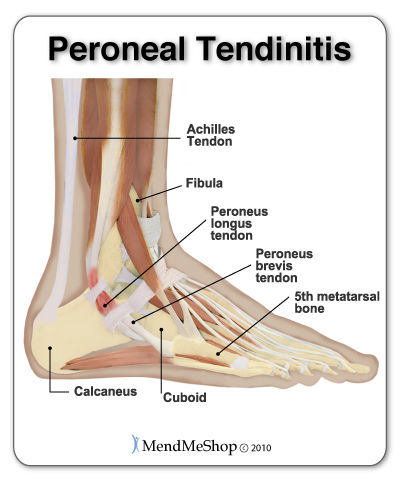
2. It improves balance.
Whether you're climbing actual stairs or working out on a stair-climbing device, you'll have to engage the stabilizing muscles in your foot and ankle and the peroneal tendons to maintain balance, Hunt said. There are two peroneal tendons in each leg, along the fibula. One is attached to the outer section of the foot near the little toe's base. The other runs underneath the arch of the foot.
3. It's an efficient, low-impact cardio workout.
Because you have to engage more muscle groups and exert yourself more than if you were on flat ground, stair-climbing is an effective and time-efficient cardio workout. "Your heart rate goes up when you're climbing stairs," Hunt said.
4. It boosts fitness.
A study published in January in the Canadian journal Applied Physiology, Nutrition, and Metabolism suggests that adhering to a stair-climbing "snacking" regimen improves fitness in healthy, sedentary adults. Researchers studied the effects of stair-climbing in 24 young, physically inactive adults. Rather than exercising by climbing steps in a single continuous session, the participants did their exercises in several shorter bouts spread throughout the day — "snacking." Climbing stairs over a period of three to 12 minutes intermittently was superior to working out continually for improving blood sugar control in people with insulin resistance, researchers found. The snacking protocol resulted in a 12% increase in cycling peak power, according to the study.
5. It lowers mortality risk.
Stair-climbing can also lower the risk of death from all causes, according to research published in 2019 by the Harvard Health Alumni Study. The study involved more than 8,000 men between ages 65 and 71. Researchers found an association between climbing a higher number of floors and lower mortality from all causes.
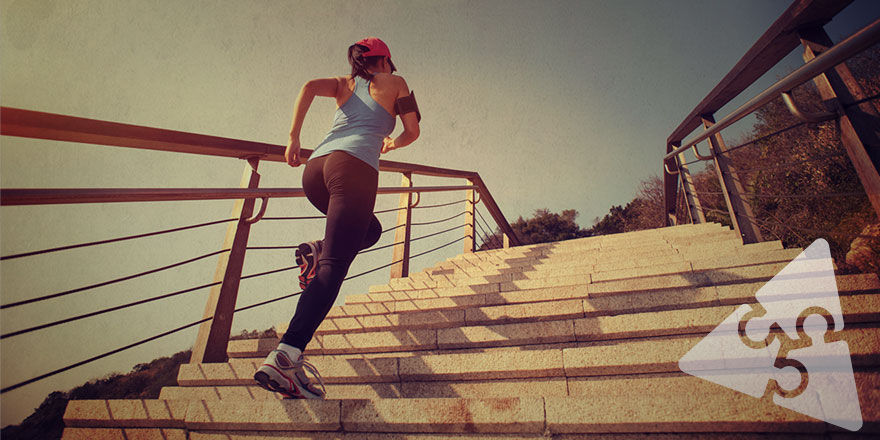
Stair-climbing strategies
Lesley Bell, a personal trainer and brain health coach at Pacific Neuroscience Institute at Providence Saint John's Health Center in Santa Monica, California, agrees with Hunt that stair climbing can be an effective exercise for many people, assuming they don't have health issues that could be complicated by such a regimen. "For most people, attempting to climb stairs anywhere between two and four days a week is arguably one of the healthiest and most beneficial things they could do," Bell said.
If you don't have any of health issues that might prevent you from stair-climbing, or if you do but have been cleared by your doctor to engage in stair-climbing — either on real stairs or on a machine, Bell suggests these strategies:
1. Maintain good posture.
"How often do you see someone on the stair climber in the gym, hunched up with their forearms resting on the rails, their spine rounded and their head up as they stare into their cellphone?" Bell asks. Their knees knock with each step, and they're totally unaware of their bad posture. "Not only are they reaping a fraction of the benefits of a good cardiovascular workout, but, most importantly, they are training the body to move repeatedly in an inefficient and totally wrong way," she said. "Without engaging the proper muscles, such as the core and glutes, the likelihood of injury increases dramatically." Bell recommends focusing less on electronic devices while climbing stairs — either actual stairs or an exercise machine — and standing up straight. "Squeeze your shoulder blades together and crunch your core," Bell said. "Every step you take, try to push up through the heel, driving your knee outward and in line with your hip to properly activate the glutes." This action will help stabilize your joints, burn more calories and develop your glutes.
2. Start out slowly.
To avoid joint inflammation or overexertion, maintain a low to moderate intensity during your workout — about 60% to 75% of your heart rate maximum, Bell recommended. Watch for any signs of discomfort and stop if you're feeling pain or becoming dizzy. Consider training for stair-climbing by participating in a water aerobic conditioning routine. Seeking guidance from a physical therapist or trainer can be useful.
3. Wear the right shoes.
Bell is often surprised by how little thought people put into the type of shoes they wear during workouts. "You wouldn't play soccer in basketball shoes or go for a hike in heels, I hope," she said. Everyone has their own particular gait — like a fingerprint — which requires a specific kind of shoe. "If you're wearing Reeboks from 1991 and complaining about knee pain, I’m going to give you a face palm and a referral to a personal trainer," Bell said. Wearing the proper athletic shoes is crucial. Go to a store that sells running shoes and have your gait evaluated by an athletic shoe expert. He or she can suggest a specific shoe size, brand and model to help stabilize your feet, ankles and knees, Bell said.
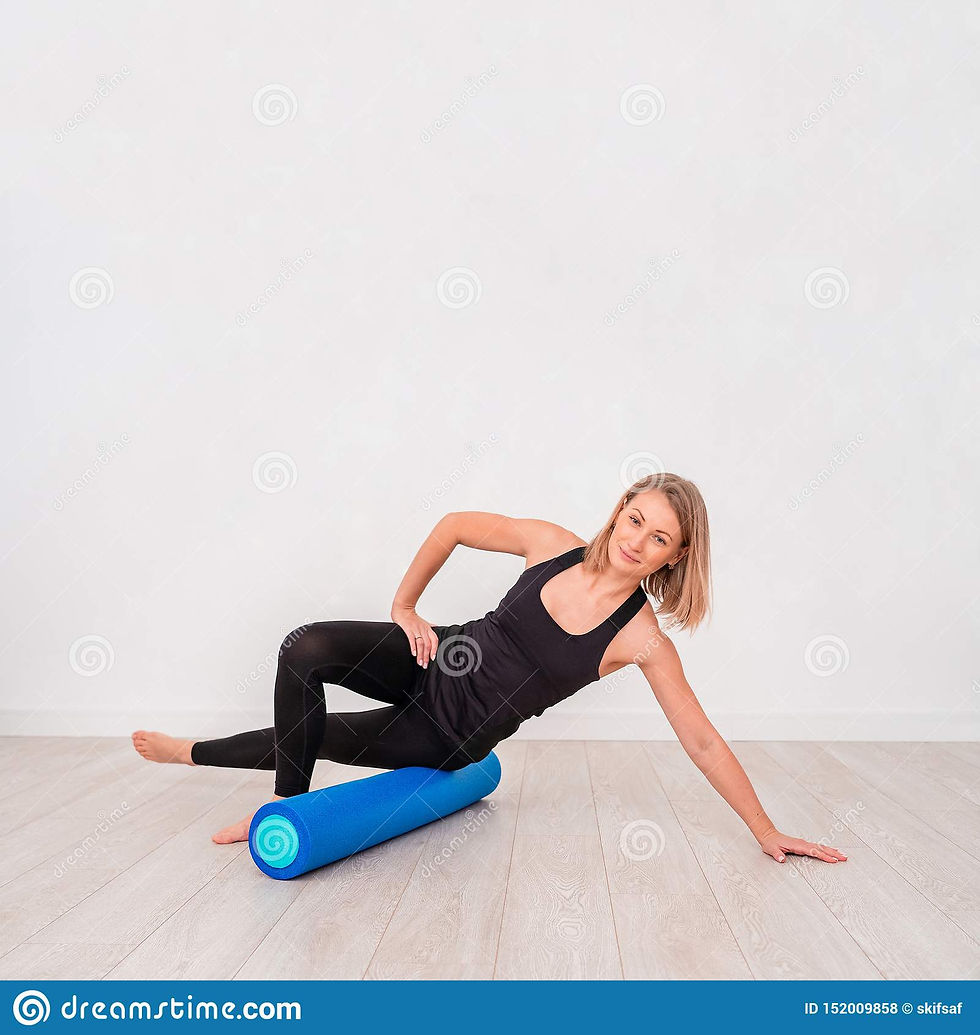
4. Use a foam roller.
Since stair-climbing places repeated stress on the same muscles throughout the workout, it's important to warm up and cool down properly, Bell said. Tight calves and flexors can lead to discomfort and overuse injuries. Bell recommends rolling a foam roller over your calves, hip flexors and glutes before each stair-climbing session. "This will facilitate blood flow to the areas that may tighten up during the workout," Bell said. Be sure to stretch those same areas after you're done with your workout.
5. Control your breathing.
It's natural to breathe more quickly with each step that you take as the intensity of your workout increases. However, that kind of shallow "chest-breathing" places unwarranted stress on the body, activating certain muscles in the torso that can lead to bad posture and improper biomechanics, Bell said. Instead, try controlling your breath by counting to three each time you inhale and exhale. Breathe in through your nose and fill up your belly each time. "This [action] will help to send adequate amounts of oxygen to the muscles and reduce any inflammatory response that may arise from shallow breathing," she said.
According to James Roland’s June 13, 2019 article “12 Benefits of Using a StairMaster” at healthline.com, stair-climbing has been a workout option for a long time. For years, soccer players and other athletes jogged up and down the steps in their stadiums.
And one of the most inspiring moments in the classic movie “Rocky” was a shot of the boxing hero running up the steps of the Philadelphia Museum of Art with plenty of energy to spare at the top.
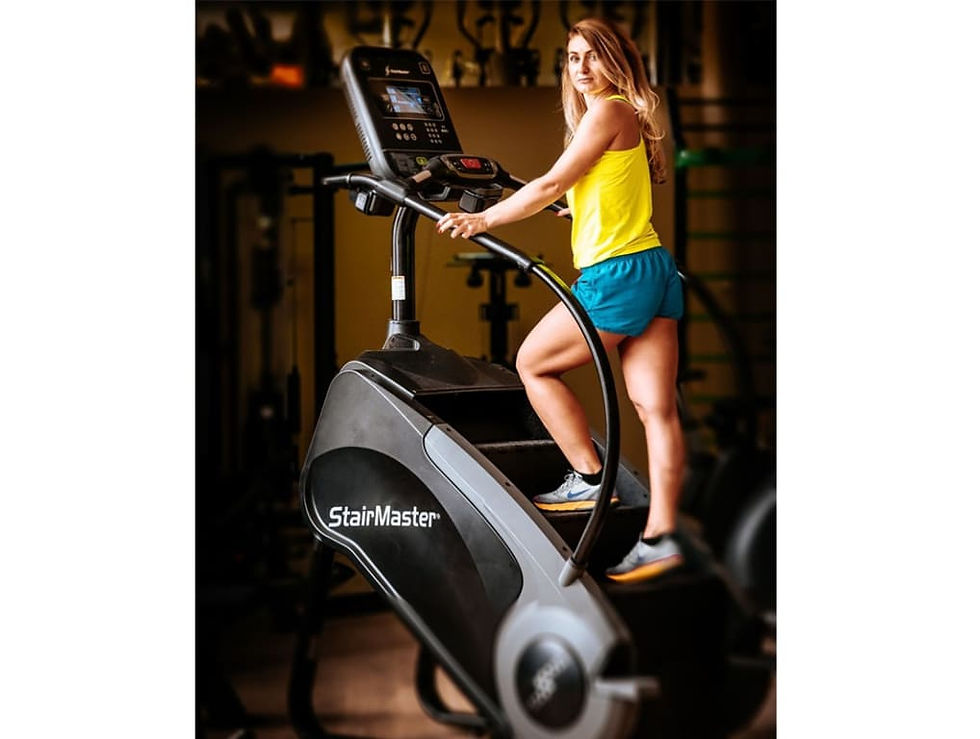
But rather than rely only on the steps in your home or out in the elements for a good stair-climbing workout, you can get those same benefits from a StairMaster.
This fitness center staple has been around since the 1980s, but the technology has improved steadily. Features such as a heart rate monitor and calorie-burning calculator have been added through the years.
In simple terms, a StairMaster is a stationary fitness machine that rotates steps, similar to a treadmill, allowing the user to climb upward at the speed and duration he or she sets. It can provide an above-average cardio workout, while also toning lower-body muscles, especially the quadriceps, hamstrings, calves and glutes.
Let’s look at a dozen health benefits of using a StairMaster and why it might be worth climbing aboard during your next workout.
1. Aerobic conditioning
Stair climbing strengthens the heart and lungs — the keys to aerobic fitness. Stronger lungs allow you to breathe in more oxygen, and a healthier heart can pump oxygen-rich blood more efficiently to all your muscles and organs.

2. Calorie burning
The StairMaster is an efficient and effective tool in losing weight or managing your current weight. A half-hour workout on the StairMaster can burn anywhere from 180 to 260 calories — or more — depending on your body weight and intensity of the workout.
A faster “climb” will burn more calories than a slower session. A 180-pound person tends to burn more calories than a 125-pound person doing the same workout.
Most StairMaster machines come with calorie-burning calculators, which estimate the number of calories burned with each workout based on your current weight.
If you’re overweight, losing a few pounds can help reduce your blood pressure, cholesterol levels and blood glucose levels, as well as take some of the burden off your joints. But an exercise routine that includes aerobic exercise and strength training is best for weight loss and overall fitness.
A StairMaster accomplishes both of those goals. However, including stretching exercises, upper-body weight training and a mix of sports and exercises will keep things interesting for you mentally and physically.
Watching your calorie intake and eating a well-balanced diet packed with fruits and vegetables, whole grains and lean proteins — while limiting your consumption of added sugars and saturated fats — are also keys to losing weight and keeping it off.
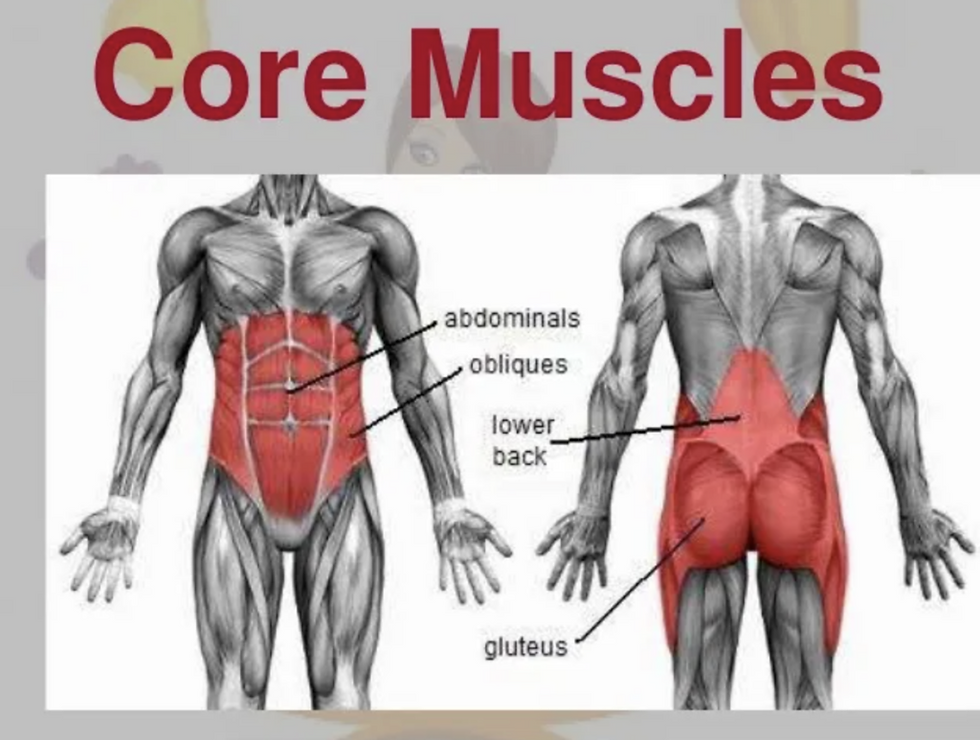
3. Core muscle strength
Because using a StairMaster requires you to keep your balance the entire time you’re climbing and pumping your legs, it also gives your core muscles a workout. Stronger core muscles help improve posture, prevent lower back pain and reduce the risk of injury.
4. Healthier bones
Weight-bearing exercises, such as climbing stairs, can help reduce your risk for osteoporosis, and treat it if you already have it. Bones are living tissue, and climbing stairs helps increase bone mass. These exercises are especially important as you get older, because natural bone loss tends to increase as you age.
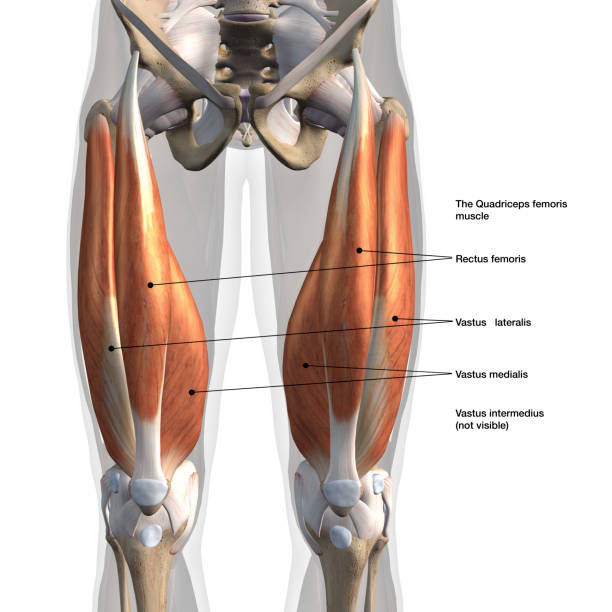
5. Stronger quadriceps
The quadriceps femoris is a group of four muscles in the front of the thigh. These muscles are essential for walking, running and just standing up from a sitting position. The quads extend or straighten the knee, so each time you push off from one step to the next you’re strengthening these large, important muscles.
6. Stronger hamstrings
The hamstrings are the three muscles in the back of the thigh that work in conjunction with the quads. They help bend the knee, so they’re also critical to walking, running and sitting down. Each time you bend your knee to take another step up, the hamstrings are doing much of the work.
7. Stronger calves
Like the other muscles in your legs, your calves allow you to run, walk and jump. They are also essential to maintaining your balance while standing. Your calves contract every time you lift your heel to take a step.
When climbing — whether it’s on a StairMaster, your front steps or up a hill — your calves have to work hard to keep lifting your heels, step after step.
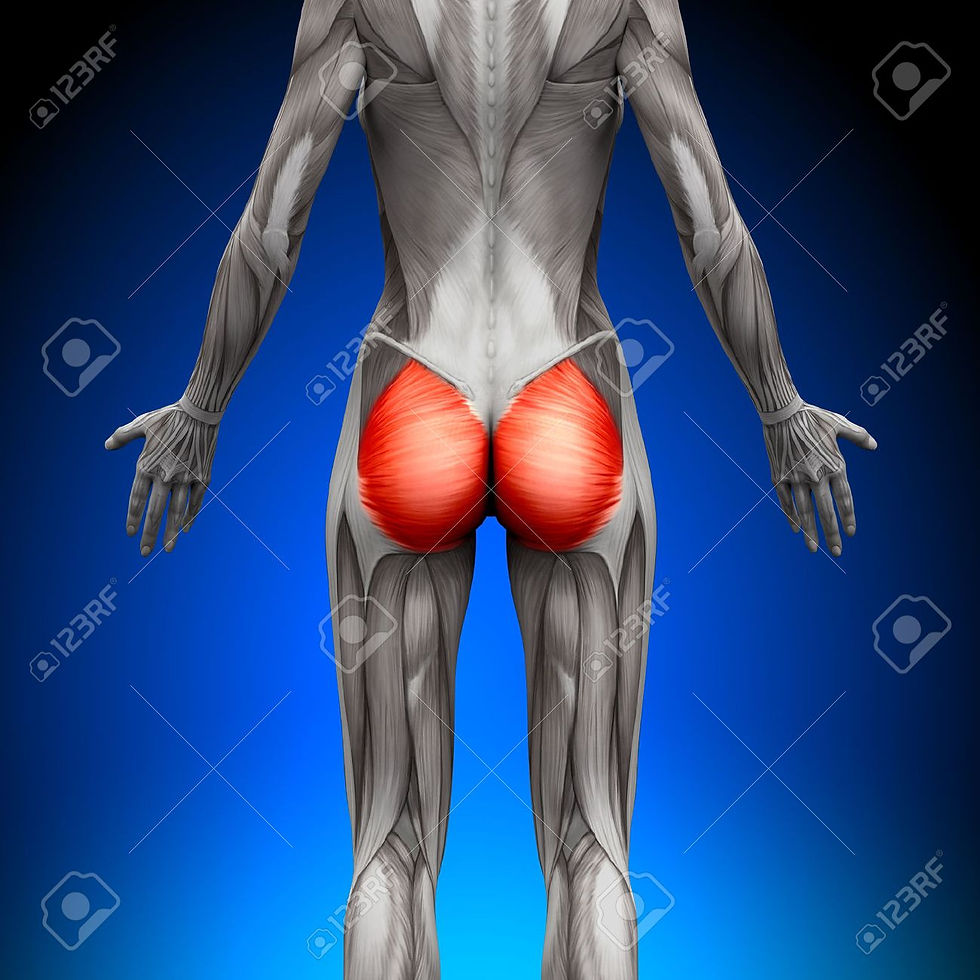
8. Stronger glutes
The gluteus maximus muscles are located in the buttocks and are some of the strongest muscles in the body. Their main function is to move the hips and thighs, so climbing stairs is a task that relies heavily on strong glutes.
9. Knee pain relief
Strengthening the knee reduces stress on the joint, which can help reduce pain if you have osteoarthritis. Using a StairMaster is considered low-impact exercise compared with the pounding, high-impact consequences of running on a hard surface.
10. Positive vibes
As you climb stairs, your body releases endorphins, which are “feel-good” brain chemicals that boost your mood and reduce your stress levels. You may feel a little exhausted at the end of a StairMaster workout, but you should feel good about the work you put in.
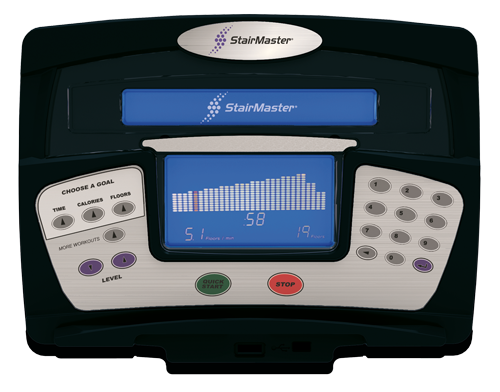
11. Versatility
Like treadmills, a StairMaster has a variety of settings to mix up your workouts. You can program the number of minutes you want to exercise. So, if you’re just starting out, you can set the machine to go for 5 or 10 minutes and work up from there.
Some StairMaster products even come with built-in computer screens that display famous landmarks to make it seem like you’re climbing up structures like the Eiffel Tower.
12. It’s only up from here
Unlike climbing an actual staircase, which requires a return walk down the stairs, a StairMaster keeps you moving up all the time. This is helpful because walking down stairs is much tougher on your knees. The tissue and fluid you use as “brakes” take a greater toll on the joints with every downward step.
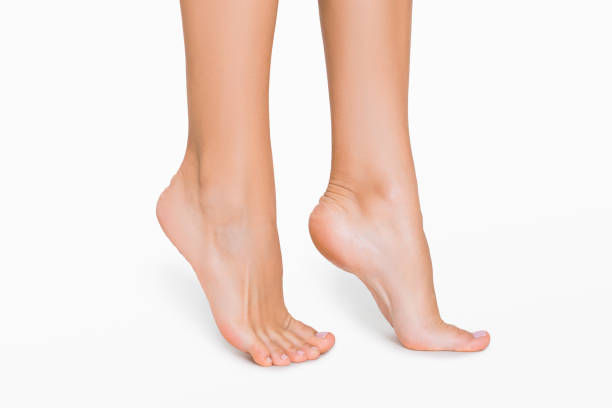
StairMaster mistakes
According to Maura Blackstone’s article “4 Stair Climber Workout Mistakes You Need to Stop Making” at empoweryourwellness.online, there are a few things that can sabotage your workout and put you at risk for injury.
1. Staying on Your Toes the Entire Time
If I had a dollar for every person I’ve seen climbing up on their tippy-toes.
Why does it matter? It’s about optimizing your movement for the best muscle activation. Injury, weakness and poor form can alter these patterns leading to overuse and injury of other muscles that were just there to pick up the slack. The body likes to move in patterns, meaning several muscles work together to perform movements.
By staying on your toes, you’re keeping your calf muscles active the entire time, altering the mechanics of how you move. My guess is that you got on the stairs to work your quadriceps and glutes.
If you do a lot of stair-climbing on your toes, your calf muscles can start to become very tight.
The fix: put more of your foot on the step and drive through the heel.
Pushing through the midfoot and heel will help engage the glute muscles more effectively.
The glutes were designed to perform heavy work e.g., when climbing stairs, propelling forward with walking or even getting up from a chair.
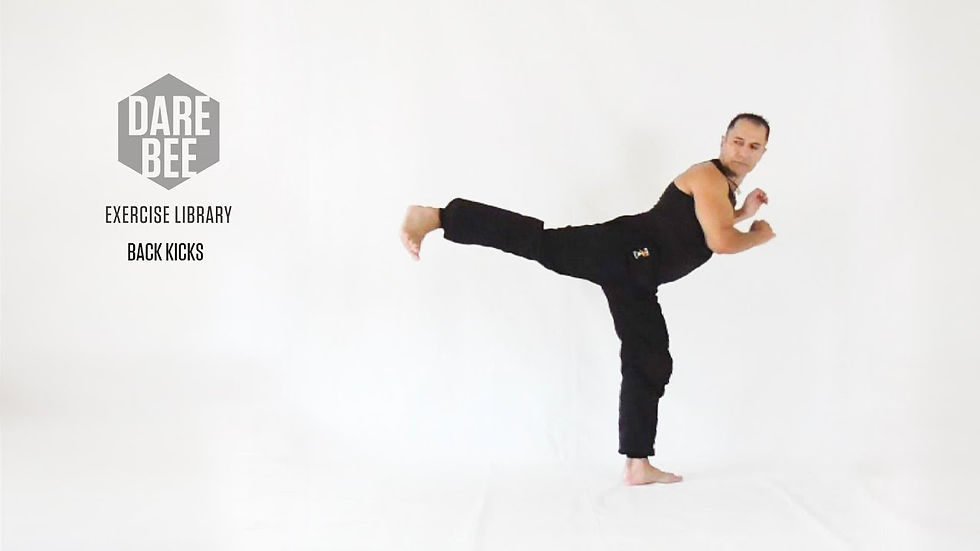
2. Kicking Backward Between Steps
I’m not sure when the Stairmaster kickback became a thing, but the fitness industry is great at spreading total nonsense, just because it’s new and different. It’s a little disturbing that more people aren’t catching on to this.
Before you form a line around the block, let me explain. I fully understand cardio machines can be monotonous. It might feel like you’re adding some flair to an otherwise dull and repetitive workout. Many articles even encourage adding kickbacks on Stairmaster and claim that you’re “toning your glutes.”
Here’s the “kicker”: You’re not getting booty gains from kicking back on a stair climber machine, and it can aggravate your lower back. Plus, it’s silly.
When I see people performing said kickback, I see increased extension at the lumbar spine from forcefully whipping their leg backward as they feverishly strain to keep up with the pace of the machine.
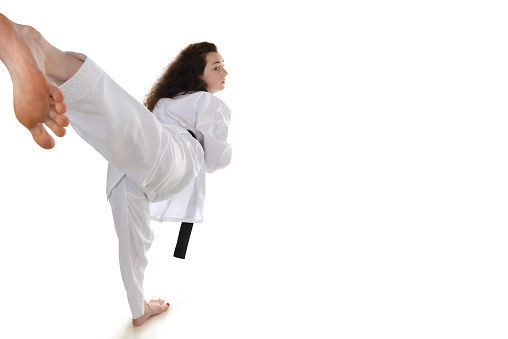
Aggressively extending the lumbar spine can exacerbate existing conditions or cause new issues. Not to mention, if you’re flailing your legs around, you’re not putting intention into the movement, which is the whole point when you’re trying to strengthen.
Not all exercises and movements are created equal, and the kickback is not giving you the results you’re after anyway.
But what if I can do the kickback correctly?
That’s fine, but what’s your goal for doing it in the first place? If you’re trying to strengthen your glutes, there are better ways to do it that actually work.
Some alternate options are squats, lunges, bridging, leg extensions with a cable machine, donkey kicks and leg press just to name a few.
With these exercises you’ll be able to focus on proper form and strength training, rather than quickly bringing your leg back, so you don’t miss a step.
Don’t just do things because you see other people doing things. Get to know why you’re doing what you’re doing.
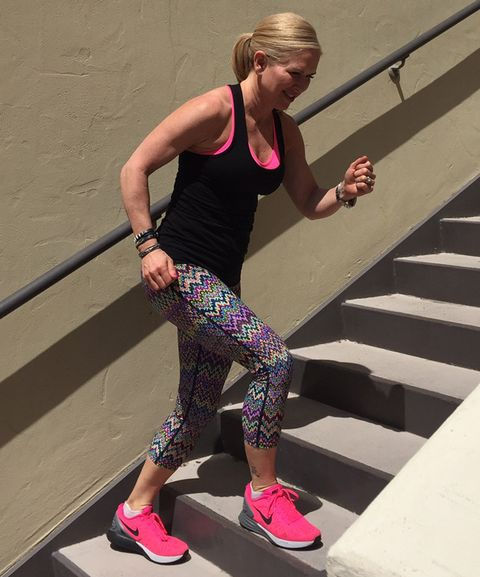
3. Caution with Climbing Sideways
This is another popular move nowadays, so let me explain why this is a risky move.
The hip abductors — the muscles on the side of your hip — are often a neglected area of focus in exercise, and they serve such an important function for stabilizing the pelvis which affects mechanics at the knee.
Weakness at the hip changes our movement patterns and places additional stress further down the leg, such as the knee and ankle. Hip abductor weakness can also affect the low back.
If you notice that your knees collapse inward or have discomfort while doing this motion, there’s an issue. Your body will always figure out how to accomplish a motion, often with bad mechanics at the expense of overusing the wrong structures.
If you’re looking to perform side step-ups and control the alignment of your knee, use a step in the gym and keep yourself safe. Use a BOSU round side up if you’re looking to add a balance challenge.
Isolating form on exercises can be challenging enough without adding a moving surface into the equation. Sometimes the basics are the best to accomplish the goal.
When the goal is to work your hip abductors, you can get more bang for your buck elsewhere, without the risk of falling down a moving staircase.
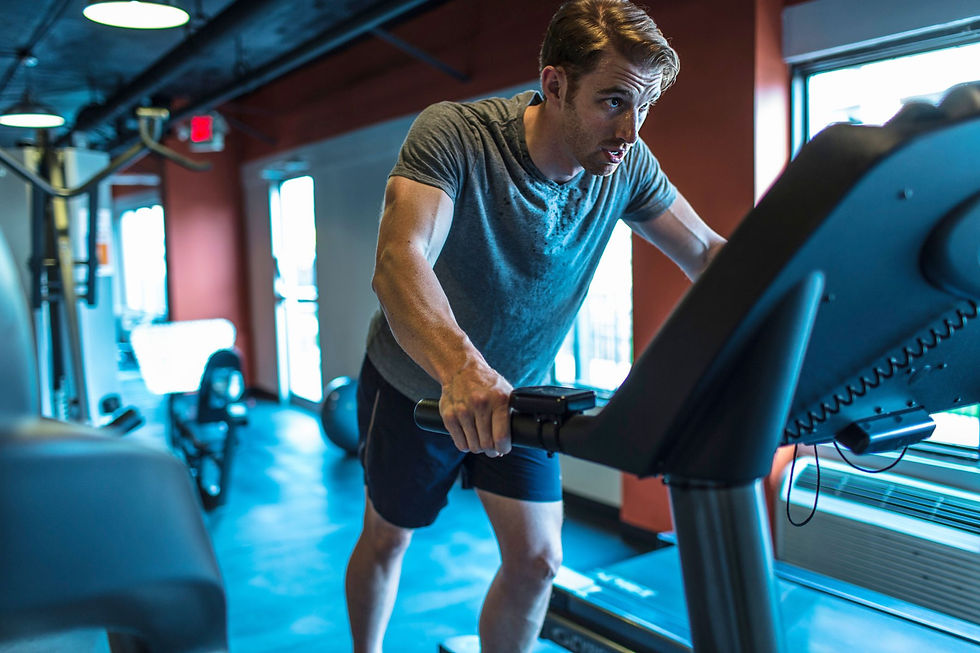
4. It's All About Posture – Stand Up Straight!
Internal eye roll and sigh whenever I see someone slumped over the handrails of a stair stepper. Add in cranking their neck up to look at their phone.
Many people do this so they can crank up the level, but if you need to lay over the machine to do this, you’re doing it wrong.
Stand upright with hands placed lightly on the handrails, and let your legs do the work.
Avoid leaning or slumping over the machine to support yourself. You need to adjust the level.
Slumping over the machine gives you a false sense of efficiency. Good posture will give you a better workout with less risk of injury.
Slouching forward overworks neck and back muscles. These are the same muscles that are already overworked with poor posture slumped over a computer or phone most of the day.
According to Julia Dellitt’s article “3 Common Stair Climber Mistakes to Avoid” at aaptiv.com, “While holding onto the railings is inherently a matter of safety, it tremendously decreases the amount of load onto your legs. [This] decreases the amount of muscle work from our glutes and hamstrings,” explained Dr. Cindy Liang, a physical therapist at Providence Saint John’s Health Center. “A method to avoid this, while still being safe, is to simply place fingertips from each hand onto the railing. Or just use one hand lightly without leaning to that side. Focus on engaging and tightening your legs to propel your body upward.”
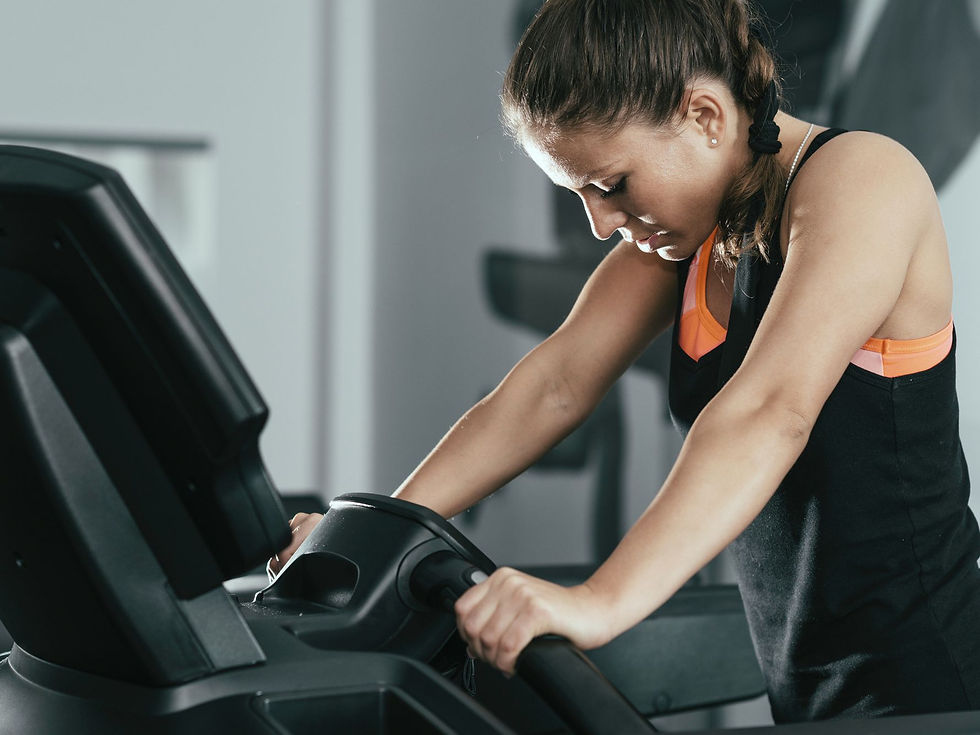
If it feels like your legs are “treading” behind you, then you’re probably putting too much weight on the handrails, notes James Shapiro, a NYC-based trainer.
Doing so also places unnecessary stress on your shoulders, and reduces core engagement, notes Trainer and Coach Melis Edwards.
“The point of the exercise is for you to ‘mimic’ climbing stairs or hiking up a hillside. [And] the work needed for your legs, core and upper body to perform this motion,” added Edwards. “By hanging on, or leaning over onto the display, you have just decreased your body weight through the support of your arms, making the activity easier to perform. By standing tall — and only using the handrails for guidance — you will place the workout demand on the intended muscles, gaining strength in your limbs and through your entire torso, while also [reaping] cardiovascular benefits.”
Shapiro says collapsing your chest and leaning forward to face down toward the steps prevents optimal lung capacity. Maintaining an upright posture keeps your hip flexors from overworking.
“It is easy to lean forward to avoid falling backward off the stair climber. Or to accidentally cheat and make the exercise easier,” said Dr. Liang. “Unfortunately, this also decreases the amount of muscle contraction, mainly through our buttocks and quadriceps. It is better to stay upright and initiate each step with a butt squeeze while maintaining the position of the hips over the legs. As always, engage your core to increase oblique activation and deep stabilizers.”




Comments